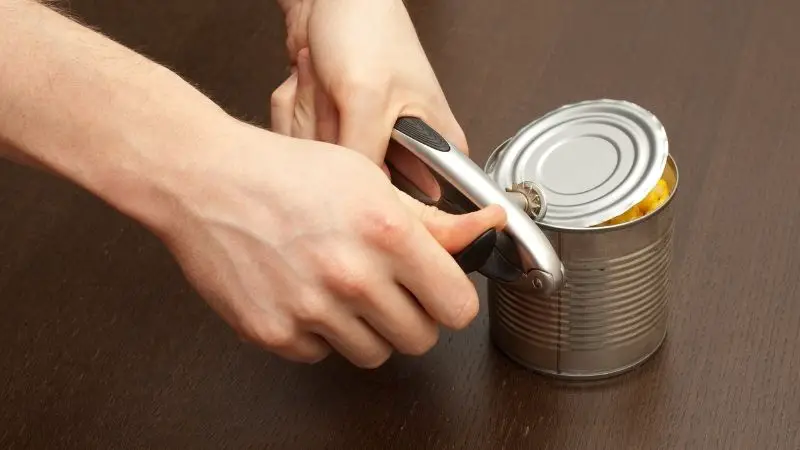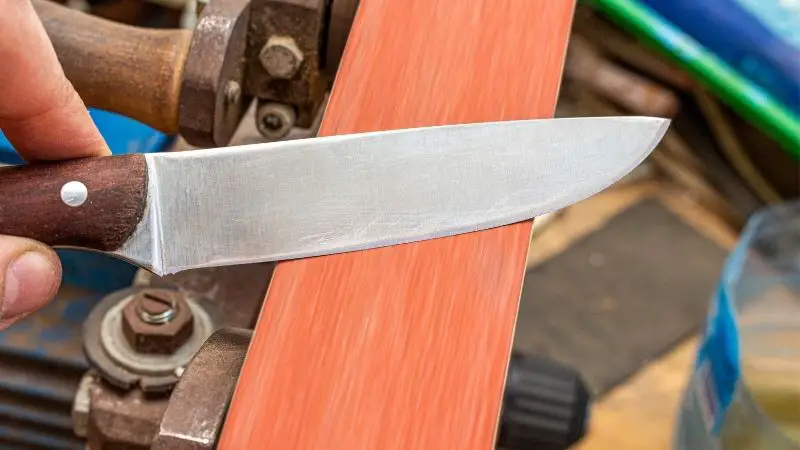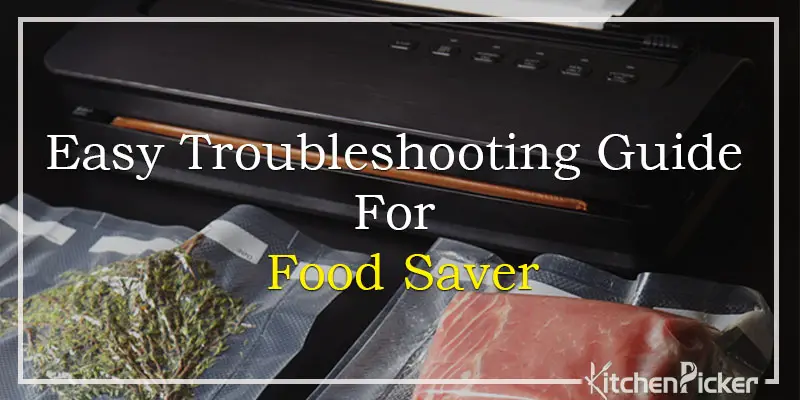When you have made a place for yourself in the kitchen you realize how crucial each piece of equipment is. Every little kitchen appliance adds to the culinary experience. And it is only a matter of time until you start investing in quality equipment for your kitchen counter.
One of the most commonly used kitchen equipment is the knife. Some people prefer a whole array of different sharpnesses assembled beside them. While others like a multipurpose knife that they can get used to.
But, regardless, a quality knife is always a necessity. And, the Nakiri and Santoku knives are the best in the market.
In this article, we are going to look at both of these knives to figure out which one fits your requirements best. After reading this article, you will be able to make an informed choice and enjoy your time in the kitchen.
So what are you waiting for? Keep on reading.
7 Comparisons Between The Nakiri v Santoku Knives
The two knives that bagged the market for the title of the best kitchen knives are bound to have some similarities. But the fun part is that both of these have more functionality in different aspects. And depending on which feature you need more, you can make your final pick.
|
Key Features |
Nakiri Nkife |
Santoku Knife |
|---|---|---|
|
Best Usage |
Vegetable, Fruits, Herbs |
Fish, Meat, Cheese |
|
Sharpening Angle |
28 to 34-degree |
20 to 30-degree |
|
Avarage Blade Length |
5-7 in |
5-7 in |
|
Handle Design |
Ergonomic |
Ergonomic |
|
Blade Design |
Straight-edge blade with a Squared-off tip |
Straight-edge blade with a Round-off tip |
|
Weight |
5 Ounces |
6-6.5 ounces |
|
Price |
Let’s take an in-depth look at what sets the two knives apart and what their features are.
Usage
The uses are slightly different for these knives. The Nakiri knife is a straight blade that gives maximum efficiency while chopping things at a fast speed.
The Japanese word Nakiri translates to a knife that cuts greens. It is traditionally designed for speed and detail. The Nakiri knife has the best use on vegetables, fruits, and works well for detail work.
The lightweight knife allows you to move swiftly and chop into vegetables in one swift motion without having to rock the knife back and forth a lot.
On the other hand, the Santoku knife is good for things like vegetables, fruits, fish, and also meat. It is slightly on the better side with the weight. The heft gives you a lot more stability on the chopping board.
This feature is a crucial one if you cook meat very frequently and want to have a handy knife.
Handle Design
Comparing to other knives, Nakiri knife is a lot simpler. As it is lightweight, it is much thinner and plain. The handle is simple and gives you a sturdy grip.
The handle is straight edges and squared out for maximum stability and ease.
The Santoku knives are also designed with a thin and straight knife handle. The only noticeable difference between the two is the tip. The Santoku knives come with a rounded tip. It is a smart design choice that makes holding the knife much more comfortable.
Avg. Blade Length
The blade length differs from model to model and in different brands for both Nakiri and Santoku knives. But the Nakiri knife is usually longer and slimmer to give the user more speed. The starting length is 6.5 inches.
Whereas the Santoku knives are usually a bit shorter than the Nakiri knives. They were initially designed to look like a chef’s knife but to be used domestically. That’s why the blade was kept a bit shorter.
Soon after the efficiency of the knife won over the professional platforms as well. The blade of a Santoku knife can go up to 7 inches.
Blade Sharpness
The blade sharpness wouldn’t probably make an astronomical difference for you if you are trying to use these knives for domestic use. Both the knives are incredibly sharp and designed specifically to give the easiest cut.
The Nakiri knife has a 28 to 34-degree cutting angle while the Santoku knives have a 20 to 30-degree angle. A 20-degree angle is more acute than a 38-degree angle. A more acute angle will give a sharper chop.
Needless to say, the santoku blades are a bit sharper than the Nakiri knives. But that is to be expected from a knife that is meant to handle fish and meat.
Blade Design
The Nakiri knives have a straight-edge blade with a squared-off tip. This makes cutting through vegetables super easy. Most Nakiri knives will have delicate carvings on the blade as well. It adds to the elegant feel of the tool.
The Santoku blade is tapered off towards the tip. It looks more like a chef’s knife than a traditional Japanese chopping knife. But the slimming design choice of the blade gives it more precision and edge. Such design of tip might lead to a bent knife tip, sometimes.
Avg. Weight
The Nakiri knife is very lightweight. It is one of its biggest charms. People swear by this knife in many cases because of how lightweight it is. The slim and thin build makes it easy for the user to maneuver the knife while chopping things.
The weight starts from as low as 5 ounces.
The lightweight feel also adds to the fact that it slices very thinly. You can get the perfect fresh julienne cut using this knife.
The Santoku knife is slightly heavier than the Nakiri knife. But it is still a lot lighter than most other kitchen knives available in the market today. The Santoku knives can start from 5.5 ounces but to get a good quality knife with one of the latest builds, you will probably end up with something like 6 or 6.5 ounces.
Price
The price points are also quite tight-knit for both of these knives in most brands. But most often the Nakiri knife would be slightly cheaper than the Santoku knife. That is because the Santoku knives are designed to handle much heavier food ingredients.
They are slightly heavier and have a more varied use case. Which means they need to be built a lot more sturdily. All of this combined with the price point for the Santoku knives is quite fair as well.
Which One Should You Choose?
Now that we have seen the basic comparison of the two knives and their design differences, let’s talk about which one you should buy. Let’s be honest, everyone has a different set of requirements for their kitchen tools. And, it will depend largely on what your food palette comprises.
But, we can definitely give you some pointers as to which direction to go in when it comes to buying your perfect knife.
Speed
If you are looking for incredible speed, you should go with the Nakiri knife instead of the Santoku one. With time and practice, both knives can give you an equal amount of speed. But if you are using it for professional work, that might not always suffice.
The added benefit of the lighter and thinner feel of the Nakiri might just make the big difference you have been seeking.
Multi-Purpose Use
If you want one knife that can do it all, get the Santoku knife. It might not give you a lot of precision when it comes to detailed work, but it is a good investment in terms of kitchen tools.
There are tons of other things to consider but what it all boils down to is what you are comfortable with. If possible go to a store, hold the knives in your hands, get a feel of the size and weight.
And, finally, invest in a knife that feels right in your hands.
Frequently Asked Question
Question: Can you use a Nakiri knife on meat?
Answer: Technically, you can. But a Nakiri knife is designed for vegetables and most people would express disdain if you were to use it on meat. You will get better results by using the knife according to what it was made for.
Question: What is a Santoku knife good for?
Answer: The term Santoku translates to – three tasks. That means the santoku knives are used for three tasks. Traditionally those three tasks are slicing, dicing, and mincing.
Question: Can you rock with a Santoku Knife?
Answer: A santoku knife has a flat edge. It is not suitable for rocking.
Question: Is a Nakiri a cleaver?
Answer: A Nakiri looks like a small cleaver. But, contrary to traditional cleavers, Nakiris are not used to carve bone and meat.
Conclusion
If you have read this far, we appreciate your time with us. We enjoyed curating this article so much. Japanese knives are a unique touch to any kitchen and they can elevate your cooking experience multifold. We are delighted to be able to introduce you to the intricacies and the differences between these two knife types.
We hope you learned something today. Good luck with choosing the best Japanese knife between Nakari vs Santoku!



